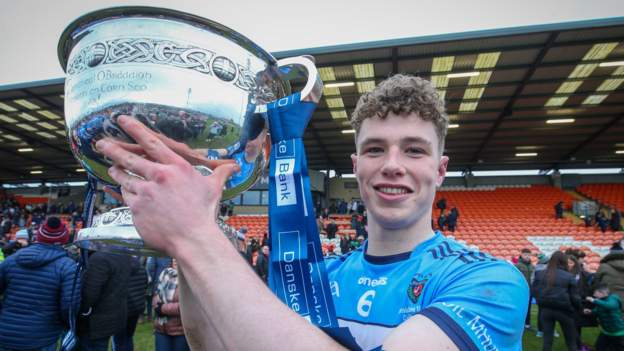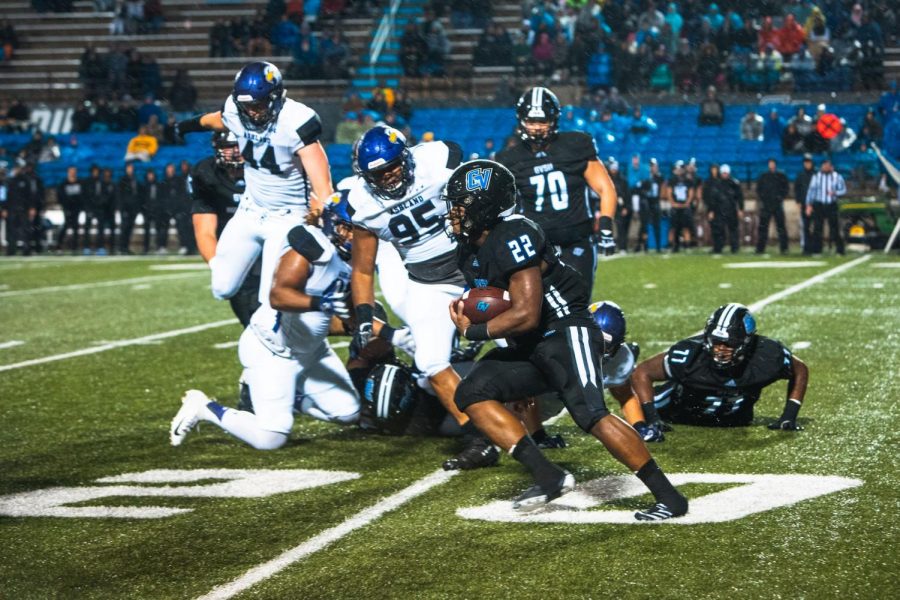

A safety also might line up near the linebackers to better defend against the run.

The player might also fake a blitz to confuse the offense. For example, a linebacker or safety might move up to the line of scrimmage in order to more quickly charge through the offensive formation - which is called a blitz - when the play begins. In some cases, a defense will try to surprise the offense by moving a player out of his or her usual position. Some defenses, however, will use mostly one or the other. Defenses often try to confuse offenses by using man-to-man coverage and zone coverage on different plays or even combining the coverages on certain plays. In zone coverage, rather than following a potential receiver wherever he or she goes, which is called man-to-man coverage, the defensive back simply covers any receiver who is in his or her particular zone. Like linebackers, defensive backs sometimes are asked to defend particular parts of the field, called zones, when the offense tries to pass. They also might help another player cover a potential receiver, which would be called double coverage.

Safeties might be asked to cover the offense's running backs, its speedy wide receivers or its larger and stronger tight ends. To cover receivers well, cornerbacks typcially need extraordinary speed and agility to react to whatever moves the receivers make while running their pass patterns. If the offensive player does catch the ball, as seen in the photo below, the defensive player usually tries to tackle him as quickly as possible.Ĭornerbacks typically line up directly across from the offense's wide receivers and often must follow the receivers and try to prevent them from catching passes. The defensive player also might try to cause the receiver to drop the ball as he attempts to catch it. When the ball is passed, defensive players usually try to intercept it, like the player in the gray jersey in the photo above, or to deflect it away from an offensive player. The primary job of most defensive backs is to defend against the pass, although they sometimes will rush the passer, and strong safeties might have more run-stopping responsibilities. They also might be called "Sam" and "Will" linebackers for short, with a lone middle linebacker being called the "Mike" or the two inside linebackers being the "Mike" and the "Ted." A pass-rushing outside linebacker in a 3-4 defense might be called a "Jack" linebacker using these naming conventions. In these cases, they usually are called strongside linebackers and weakside linebackers, respectively. Outside linebackers are sometimes used on a particular side of the offense, either the strong side or the weak side, which are determined by the alignment of the offensive players. Middle or inside linebackers typically are more stout than outside linebackers, who usually are taller and faster. Outside linebackers typically have similar responsibilities, but in some defenses - mostly those called 3-4 defenses, which use three linemen and four linebackers - the outside linebackers are much more likely to rush the passer. If the offense tries to pass, however, they might have to cover a potential receiver, defend a particular part of the field or rush the passer. Inside or middle linebackers typically focus more on stopping the run. Linebackers' responsibilities depend on the defense's strategy and whether the offense is trying to run the ball or pass it.


 0 kommentar(er)
0 kommentar(er)
